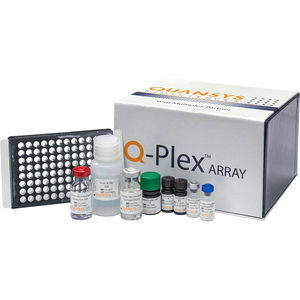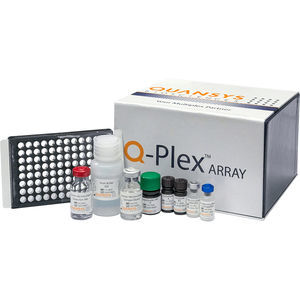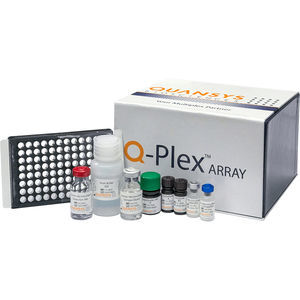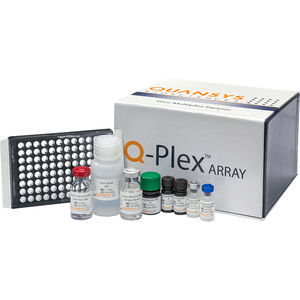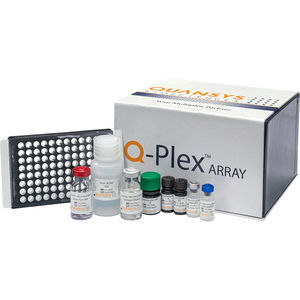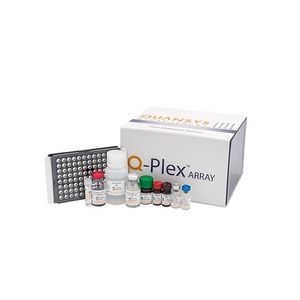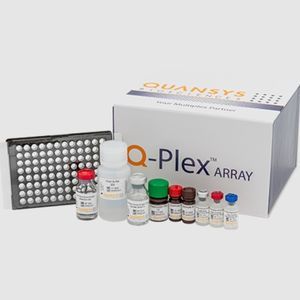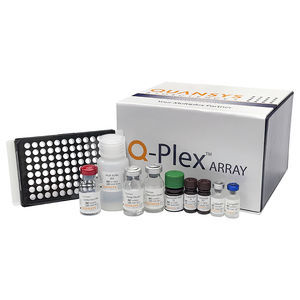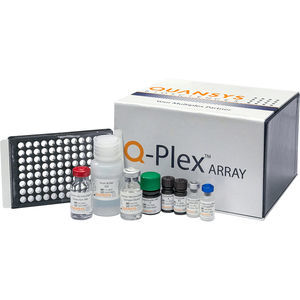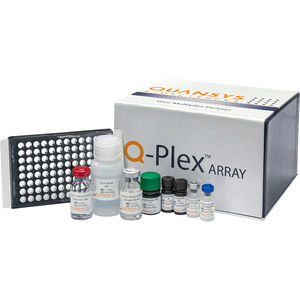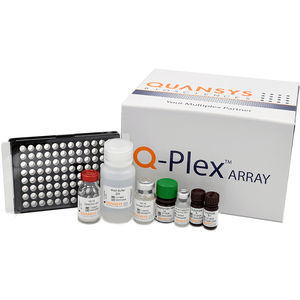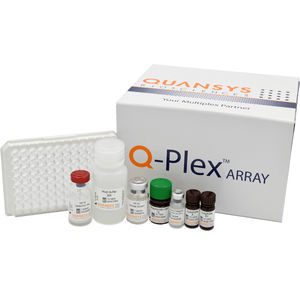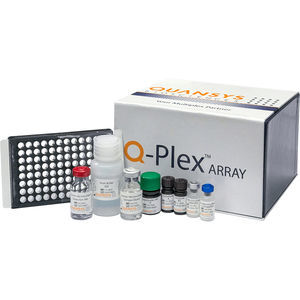
- Laboratory
- Laboratory medicine
- Research test kit
- Quansys Biosciences
Research assay kit Q-Plex™biomarqueursbloodchemiluminescence
Add to favorites
Compare this product
Characteristics
- Applications
- for research
- Tested parameter
- biomarqueurs
- Sample type
- blood
- Analysis mode
- chemiluminescence
- Result display time
5 h
- Sample volume
0.025 ml
(0.00085 US fl oz)
Description
Cytokine release syndrome (CRS) occurs after treatment of some types of immunotherapy, such as monoclonal antibodies and CAR-T cells, when a large number of cytokines are rapidly released into the blood stream from immune cells affected by the immunotherapy. Symptoms include fever, headache, and a rapid heartbeat, but severe reactions can be fatal.
The Q-Plex Human Cytokine Release Syndrome (16-Plex) is a fully quantitative ELISA-based chemiluminescent assay allowing the concurrent measurement of 16 biomarkers or analytes. Using only 25 µL of sample per well, up to 80 samples can be assayed for all 16 markers in the panel within 4.83 hours.
The Q-Plex Human Cytokine Release Syndrome (16-Plex) provides researchers an easy to use and cost-effective means of generating a cytokine profile for each sample. Q-Plex plates are built by adsorbing 16 distinct capture antibodies in a defined array to the bottom of each well. Our high-quality reagents help ensure the accuracy of your results.
Measure 16 Human Cytokine Release Syndrome specific analytes IL-1b, IL-1Ra, IL-2, IL-2Ra, IL-6, IL-6r, IL-8, IL-10, IL12p70, IL-13, IFNy, IFNα, GM-CSF, TNFα, MCP-1, MIP1a
Sensitive, reproducible, and convenient 96-well format requiring low sample volumes
Processing
All Quansys Q-Plex™ Multiplex and Singleplex assays require the use of the Q-View™ software to read and interpret the test results. A fully-functional, free trial version of the software is available to download, install, and use to analyze your first kit(s). At the end of the trial period, a purchased license is required to continue the use of the Q-View software.
Catalogs
Related Searches
- Assay kit
- Blood assay kit
- Serum assay kit
- Immunoassay assay kit
- Plasma assay kit
- Infectious disease detection kit
- Molecular test kit
- Respiratory infection test kit
- Whole blood detection kit
- Clinical assay kit
- COVID-19 assay kit
- ELISA assay kit
- Research assay kit
- IgG test kit
- Laboratory detection kit
- Cell assay kit
- Oncology test kit
- Urine assay kit
- Animal assay kit
- Tissue detection kit
*Prices are pre-tax. They exclude delivery charges and customs duties and do not include additional charges for installation or activation options. Prices are indicative only and may vary by country, with changes to the cost of raw materials and exchange rates.







